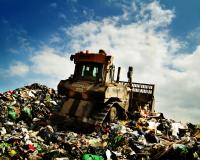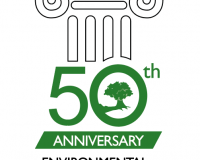
Vibrant Environment
All | Biodiversity | Climate Change and Sustainability | Environmental Justice | Governance and Rule of Law | Land Use and Natural Resources | Oceans and Coasts | Pollution Control

Savvy investors are increasingly considering climate-related information in their decisionmaking. How companies model future costs of climate policies, the extent to which they are prepared to adjust to the physical impacts of climate change, and how climate projections impact corporate planning are just some of the information investors are interested in knowing. This argues for considering more climate-related information legally “material” under existing U.S.

Since 2015, ELI has served as Secretariat for the International Network for Environmental Compliance and Enforcement (INECE). Now a month into the new year, we thought it was an opportune time to look back at INECE’s accomplishments from 2019, reflect on key developments pertaining to environmental compliance and enforcement, and share some news for 2020.

On January 23, 2020, EPA and the U.S. Army Corps of Engineers released a final Navigable Waters Protection Rule to redefine “waters of the United States” (WOTUS). This new rule repeals a Reagan-era definition rule and adopts an even more limited definition of the waters of the United States that are subject to the federal Clean Water Act.

The packaging industry faces mounting shareholder and public pressure to reduce the environmental impact of plastic. The recycled plastics market in the United States is positioned for growth, but developing a reliable supply of post-consumer plastics will be costly. Reliance on export markets has limited investment in domestic recycling capacity, local collection programs vary considerably, and many consumers are ignorant about what can and cannot be recycled. The low cost of manufacturing virgin plastics compounds these challenges.

Each year, the Environmental Law and Policy Annual Review (ELPAR)—a collaboration between Vanderbilt University Law School (VULS) and ELI—identifies articles that propose innovative law and policy approaches to pressing environmental problems. This year's awardees propose creative approaches to a range of cutting-edge environmental issues:

There are plenty of blog posts stating portable electronic devices (PEDs) and industrial settings don’t mix, but most are about distracted working: PED use is unsafe because employees are distracted and unfocused and accidents can happen. That’s not this post. Instead, I want to talk about the legal and safety challenges that pose liabilities when PEDs are intentionally used as part of the work environment—especially within designated hazardous environments.

The U.S. Court of Appeals for the Fourth Circuit on Tuesday, January 7, 2020, explicitly relied on environmental justice (EJ) concepts to vacate and remand a Virginia state air pollution permit for a compressor facility associated with an interstate natural gas pipeline. This is one of only a very few federal court decisions to address EJ expressly, and is noteworthy because of its explicit application of EJ elements.

After almost getting hit by an Amazon Prime truck as I wandered around Greenwich Village, I started to look around at what was piling up in the foyers of posh condos and on the steps of the venerable brownstones. Maybe lying under these mountains of cardboard was a first edition of The Call of the Wild off eBay, but I doubted it.

In early December, delegates from around the world convened in Madrid for the 25th Conference of the Parties to the UNFCCC (COP 25). They celebrated the 2nd meeting of the parties to the Paris Agreement, aiming to complete the Paris Agreement rulebook. As the parties struggled and ultimately failed to come to a decision regarding global carbon markets, the goal of limiting global warming to 2 degrees appears increasingly unlikely, and the prospect of climate engineering (CE), once an abstract debate, inches closer to becoming a reality.

The passage of the National Environmental Policy Act (NEPA) was a seminal moment in the history of U.S. environmental federal policy, advancing protection of the environment in decisionmaking. Unfortunately, the process has become increasingly cumbersome, lengthy, and frustrating to many parties. Moving forward, an improved focus on the quality and alignment of decisions is needed.